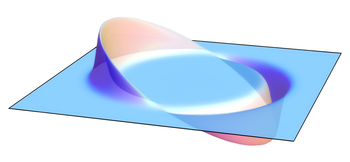Haven't done shipbuilding in a while so let me start simple. Sci-fi spacecrafts all tend to have some unexplained method of generating artificial gravity, which keeps the crew nice and cozy. The more realistic ships use centrifugal force for this but mine uses the good old "handwavium" to generate its gravity.
The gravitational core of the ship is placed right in the centre, surrounded by the machinery which gives it its properties as well as the foundation of the ship. Because of this the ship will be radially designed, perhaps spherical or disk-shaped to equally distribute the force. The idea I am going with has the core serve two functions: first at 'low' intensity it serves to keep the crew grounded. At higher intensities (a fraction of the suns mass) it serves for warp travel. This second application is rather problematic but you don't have to answer it.
However, this is not my only concern. The ship is quite large, approximately one kilometre in diameter to house its closed ecosystem and machinery. Due to its mass it cannot enter into an atmosphere, instead relying on shuttles for short distance transportation. These smaller ships also serve for mining operations to refuel using asteroids and repair or expand the ship.
My question is how this type of ship would function in ordinary conditions. The best answer should take into account these factors:
- The ship has to maintain its structural integrity
- There is propulsion, with exhaust
- The ship has shuttles

